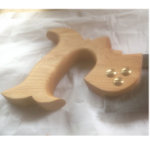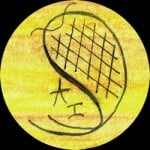Having trouble chopping bench mortises
Welcome! / Forums / General Woodworking Discussions / Having trouble chopping bench mortises
Tagged: bench, frustration, mortise
- This topic has 37 replies, 6 voices, and was last updated 10 years, 5 months ago by
 John Purser.
John Purser.
-
AuthorPosts
-
 22 November 2013 at 4:46 pm #22039
22 November 2013 at 4:46 pm #22039Here we go John it is not just you who has trouble with this type of timber.
The timber I am using is 4″ x 2″ really for stud work and not of joinery standard. Probably very similar to what you have I think.Attachments:
You must be logged in to view attached files. 22 November 2013 at 5:23 pm #22044
22 November 2013 at 5:23 pm #22044Mark the pictures came through a bit fuzzy but I recognize those dented sides and the ends that look like they were gnawed! And yours still looks better than mine. It’s like working in cork or industrial balsa wood isn’t it? My Home Depot has harder wood in the stud section but every bit of it is either twisted or has many large knots and often loose knots with the core sticking out.
Thanks for the commiserating. It does feel better knowing the lumber industry isn’t just picking on poor little me!
John
 22 November 2013 at 9:43 pm #22088
22 November 2013 at 9:43 pm #22088John give this a read…
http://www.popularwoodworking.com/techniques/joinery/real-joinery-surfaces
 23 November 2013 at 3:10 pm #22117
23 November 2013 at 3:10 pm #22117Greg, thanks for the link. Nice to see close up pictures of “real” joints.
Sam and Greg I appreciate what you’re saying and I agree with you, big picture. Let me assure you and anyone else thinking along these lines that I’m no perfectionist! At the same time, I didn’t get into woodworking to be the worst woodworker I could accept. My goal is to become a craftsman one day and I’m not going to get there by blaming the wood and buying new tools. So when my mortise holes got so sloppy I was thinking of applying the glue with a caulking gun it gave me pause. 😉
More importantly, the reason I started this thread was because for the first time I was considering a theory for poor work that wasn’t directly based on my eye, my hand, and my mind. Now I’m glad I went down that road as I learned a lot and in the end it came back to me. Which is good news because if I can bring it back to me then I might be able to fix it! But when I first saw my path bending that way I questioned my motives. Was I making excuses? Was I blaming the material in order to short change the learning process and thereby cheat myself? Well, as we say in AA “…self cannot overcome self, a sick mind cannot heal a sick mind.” I needed critique and perspective. So I made my case here.
And I’m glad I did.
Yes, the wood is soft enough to cause me problems.
So I need to select better wood for the purpose.
So I need to be more aware of the character of the wood I’m working.
So I need to adjust my tools and technique to suit the material.
So I need more practice.
So I need to engage all my senses when I’m working wood.
And yes, so I need to adjust my expectations. Some. A little. Temporarily.I’m not a perfectionist but once in a while I do have expectations before their time!
Thanks again,
John
John,
We’ve been talking mortises so much. Time for the tenons 🙂
Maybe you should try and fit a tenon to one of your better mortises. Gets a bit boring after weeks of pounding on a chisel with a mallet don’t it? 😉 Might wanna make a change and get a feel of how tenoning feels like. After all perfecting one part of the joint doesn’t help if you don’t have the other part.
I always practice mortising and tenoning, never just one of them. No matter how bad the mortise turned out I always tried to fix it and fit a tenon to it (of course a bad mortise would lead to a ill fitting joint no matter how hard you tried…). It’s part of woodworking. We all make mistakes in joints and we need to learn how to FIX them.
Another reason to practice tenon making is that there are many ways to do it and it’d be nice if you picked one that suits you. Sawing, paring with a chisel, routering, chisel plane, rabbet plane or even a good ol’ no 4 are probably just some of the ways to make and trim a tenon.
Router’s a good place to start, can’t go wrong with it. If you have a handscrew clamp you can use that as a guide for chisel/chisel plane trimming, pretty much a no-brainer too.I’ve been practicing sawing right to the line, no tuning :/. It’s good to set a high target.
May beginner woodworkers (me and you) all master the basic joint of mortise and tenon.
Sam
 23 November 2013 at 8:19 pm #22145
23 November 2013 at 8:19 pm #22145Sam I’ve got a half dozen 2X4 scraps for tenon practice all laid out and ready to go. But I’m going to keep chopping while I’m getting better. I’ve got 4 more mortises to go then I’ll cut some test mortises then go for the real deal. I cut several earlier and while they weren’t pretty they were MUCH better than my mortises whether I sawed them or split them.
If I need help with them that will be another thread.
John
-
AuthorPosts
- You must be logged in to reply to this topic.
